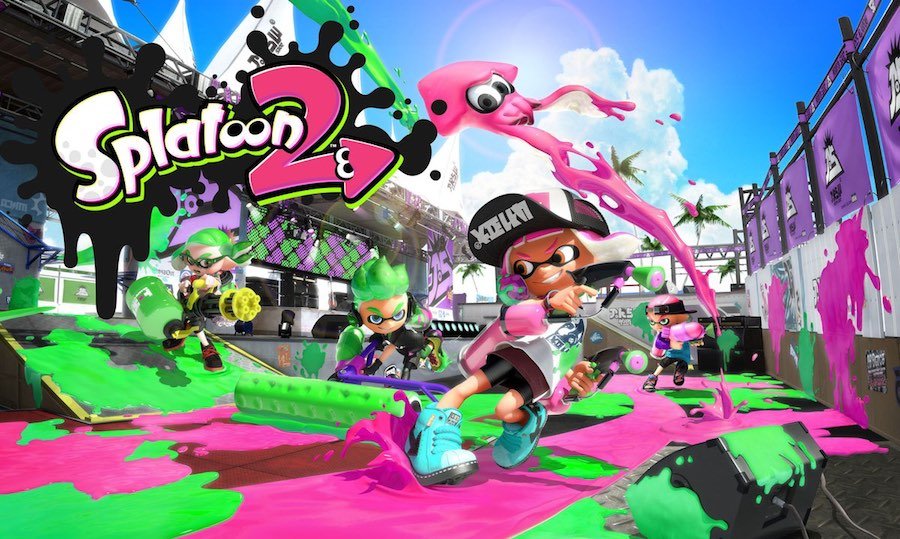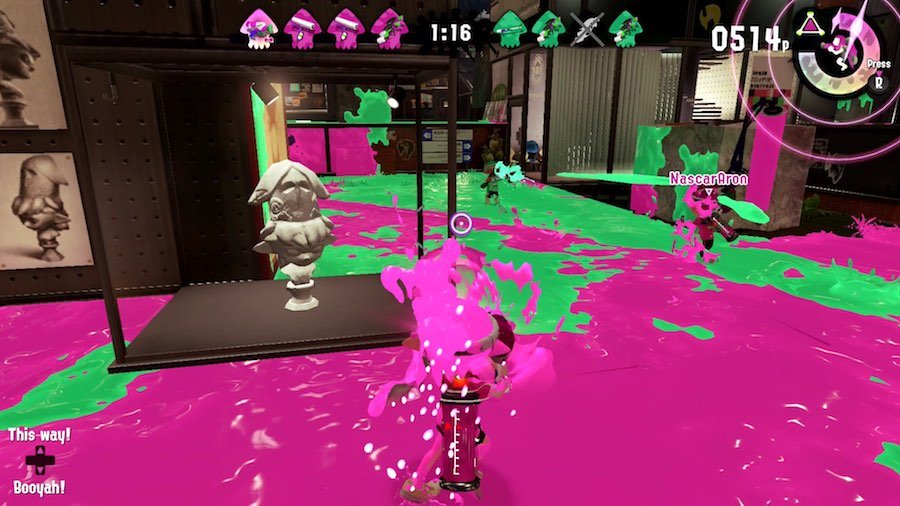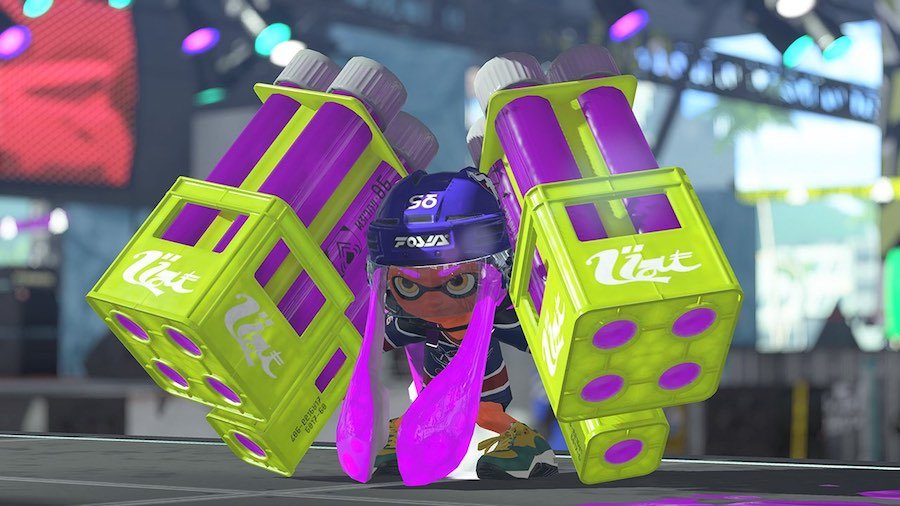
You know what’s fun? Walking. People don’t talk about how joyous simply moving around is, but you’d be a fool to deny it’s one of life’s greatest pleasures. You don’t think about inherent happiness in walking because it’s something that you do every day. As I write this, I am 29 years old. That means I’ve been walking for something like 28 years. That’s 10220 days. It’s practically impossible for something repetitive like walking to remain fresh for that long. Over time, the novelty of movement wears off and walking becomes something that just ‘happens’.
If I end up in a horrific train accident tomorrow and lose my legs, I’ll be forced to throw out those 28 years of experience and retrain my body to use a wheelchair. For a while, this would be terrible; after all, I still trip on minor sidewalk cracks pretty regularly for someone who has theoretically been practicing his footwork for 28 years. Nonetheless, I would undoubtedly get better at using my new wheelchair over time, and at some point, I would occasionally forget that the wheelchair was even there. The only thing I would think is that I wanted to get from point A to point B, and the manner in which I did so would be subsumed by my desire to move.
Somewhere in between getting the wheelchair and forgetting its existence, I bet that I would start having fun. I remember occasionally running as a child for no reason other than to feel what it was like to run. Confidently moving from one place to another is enjoyable, but the real satisfaction comes from testing the limits of your ability. Some people never get over this urge; those people become Olympians. For the rest of us, movement eventually becomes rote, and the experience of learning how our bodies interact with the world only recurs if circumstance demands it.
While playing Splatoon 2, I realized that Nintendo’s developers know exactly how wonderful it is to walk around. More importantly, they grasp how fun it was to learn to walk, even though they almost certainly don’t remember the process. Nintendo’s games often feel like they were conceived at the highest, most conceptual level and then distilled down into something that a person could play. Particularly in light of the company’s recent output, I think the opposite is true. Nintendo designs a way for its characters to move, and then builds the game that naturally falls out of that decision. They undoubtedly spend a lot of time on the rest of the package; they do possess the most enduring stable of characters this side of Disney, but the mechanical core is always rock solid. Their games present a way of interacting with the world that is superficially similar to our own, but wildly different in a few choice ways. Those differences allow the developers to create challenges that force the player to test their understanding the game’s movement, and that sensation’s relationship to a universal human experience makes the games timeless.
That the most recent incarnation of this concept involves fashionable squid people is just gravy.

Finally Talking About The Game
Splatoon 2 is a game about a civilization of cool (read: sneaker-obsessed) anthropomorphic squid people who are currently at war with a similarly cool (read: sunglass-wearing) group of anthropomorphic octopus-people. These wars are fought with a collection of squirt guns that shoot neon-colored ink. I’m sure that many people out there know the exact nature of the conflict between these two spineless factions, but I honestly have no idea what’s going on in the game’s plot. The characters communicate through extraordinarily lengthy blocks of slow-scrolling text, and I spend the majority of any story beat mashing all of the controller’s buttons in a futile effort to find the one that will allow me to skip or speed up the proceedings.
Truthfully, the specifics of the game’s story are inconsequential when compared to its overall vibe. This game oozes style and feels distinctly Japanese in a way that reminds me of Jet Set Radio (2000) on the Dreamcast. Honestly, the whole thing has a very SEGA-on-the-brink-of-bankruptcy vibe, but that might just be because it’s exceptionally colorful, features bonkers music that sounds like multiple bands are playing simultaneously, and seems like it fell out of an alternate reality where commercial viability takes a back seat to what some young Japanese game designer thinks would be ‘totally rad’. Comparisons between this game and SEGA’s turn of the century output fall apart when you start playing the game, however. If anything SEGA developed felt nearly this good, their most notable recent game wouldn’t be a very good version of Tetris.
Anyone who looks at Splatoon 2 for more than 10 seconds will tell you that it falls into a genre of games known as ‘shooters’, and while they’re technically right, they’re also missing the point entirely. If we accept that games like DOOM (1993), Quake (1996), and Call of Duty (every year until we are all dead) represent prototypical shooters, this is a genre founded on looking down the barrel of a gun and pulling the trigger when anything with a face steps in front of you. Splatoon 2 casts you as a gun-totting character, but you’re never explicitly tasked with blasting other creatures. Instead, Splatoon 2 is always a game about shooting the environment. Your gun catapults gooey paint in a parabolic arc, and the paint sticks to nearly any surface. You’ll still pop some enemies from time to time, but it’s only in service of your actual goal, which is to stay alive long enough to ink more turf.
There are two reasons to paint the ground in Splatoon 2:
1) The game’s core multiplayer mode is a two-team affair that’s scored based on which team covered more of the level in their color that round.
2) You can morph into a squid at any time and swim through ink of your own color.
When you first observe Splatoon 2 the first point seems like the more important one, but a few seconds with your thumbs on the sticks proves the second mechanic is what matters.
About That Swimming
Walking around in Splatoon 2 is clunky and sluggish. It’s not aggressively bad, per se, but no one would play a game that consistently felt like this for any length of time. By contrast, swimming through ink of your team’s color feels like being bolted onto the nose of a Saturn V rocket. As if the sensation of speed weren’t enough, you’re also far more mobile when swimming. Any area that’s been covered by your team’s paint is fair game, and that includes walls. Areas that initially appear impassable simply require creative use of ink to become playgrounds; this concept forms the backbone of the game’s entire single-player component, which presents increasingly devious obstacle courses for you to navigate.
Because you can’t move at max speed and fire your weapon at the same time, Splatoon 2 provides a riff on Resident Evil 4’s (2005) brutally effective risk-reward system. RE4 makes you stand in a single spot while your weapon is drawn, and though Splatoon 2 is a bit more forgiving, the overarching message is the same. Shooting a gun isn’t the power fantasy seen in most games; in fact, pulling your gun out makes you slightly more vulnerable than you were when laying low. It’s an inversion of traditional shooter tropes. In something like Call of Duty, you desperately want to come upon an unsuspecting group of enemy players to mow down. In Splatoon 2 you cherish the moments when you can swim to a quiet area and cover it in peace before diving into the newly created pool and blasting off to another locale.
I spend most of my time in other online shooter games wondering what I can do to help my team succeed at a given moment. Generally speaking, I fail to figure out what tactics would help my team win and settle for shooting as many people as possible. Splatoon 2 avoids this problem in its main ‘turf war’ mode because the battle’s current state is completely explained by an omnipresent overhead view of the map that updates in real time as different areas are painted in with each team’s colors. A glance at that map provides enough information to know where choke points are or how you might be able to turn the tide of the battle. It’s simple, it’s clean and it is a natural result of the game’s other design choices. You’re incentivized to paint the ground because it allows you to move in an enjoyable way, and conveniently, that action aids your team. As a bonus, the mechanic makes it easy to tell what’s going on at a glance.

It should be said that the game’s visual style is incredible, and the world created for the virtual squid people to live in feels remarkably realized. I’ve written 1,500 words about this game, and I haven’t even touched on the fact that it’s also an elaborate paper-doll simulator that allows you to dress your chosen squid person in a variety of stylish and not-so-stylish getups. These articles of clothing all have stat bonuses associated with them, but I really don’t care how much better they make me at the game, I just want my character to look cool. The game will always be fun to play, even without the statistical improvements clothing offers.
What’s less fun is everything that’s not a direct result of the game’s mechanics. The menus in this game are hopelessly confusing, I can’t discern the meaning of some stats listed on the multiplayer lobby screen, and I consistently exit menus unintentionally while simultaneously discovering that I can’t back out of inexplicably different menus. In short, it’s a mess and it feels startlingly old for a game that is otherwise quite modern. It’s almost as if the developers realized they needed a way for people to actually start the super-sweet squid swimming simulator that they’d built a few days ahead of the game’s release and settled for copying in the similarly flawed interface from the first game.
Despite having to hammer on a button every time I start the game in a desperate attempt to speed up needless character dialog, despite feeling like I must be missing something every time I open up one of the menus, and despite the painfully slow process of unlocking new multiplayer modes, I love this game. In so many ways, it exactly what a game should be. It’s a wholly new idea that steals good concepts from other games and applies them in new and unexpected ways. Plus, it looks beautiful. More than anything, it gives my thumbs an experience that I can’t find anywhere else.
The Point Of All This
It’s overly reductive to boil Nintendo’s games down to movement mechanics, but that won’t stop me. Super Mario Bros. 3 (1988) is seminal because it feels satisfying to defy gravity and control the arc of the main character’s jump. The Legend of Zelda (1986) is delightful because you can explore by moving a landlocked character in every direction. Splatoon succeeds because it contrasts moments of extreme grace with the mundanity of walking to work. All of these games are good because they teach players to interact with the digital world in a new and unexpected way. Splatoon 2 is just the latest iteration. No matter when you play it, it will always be fresh. ★